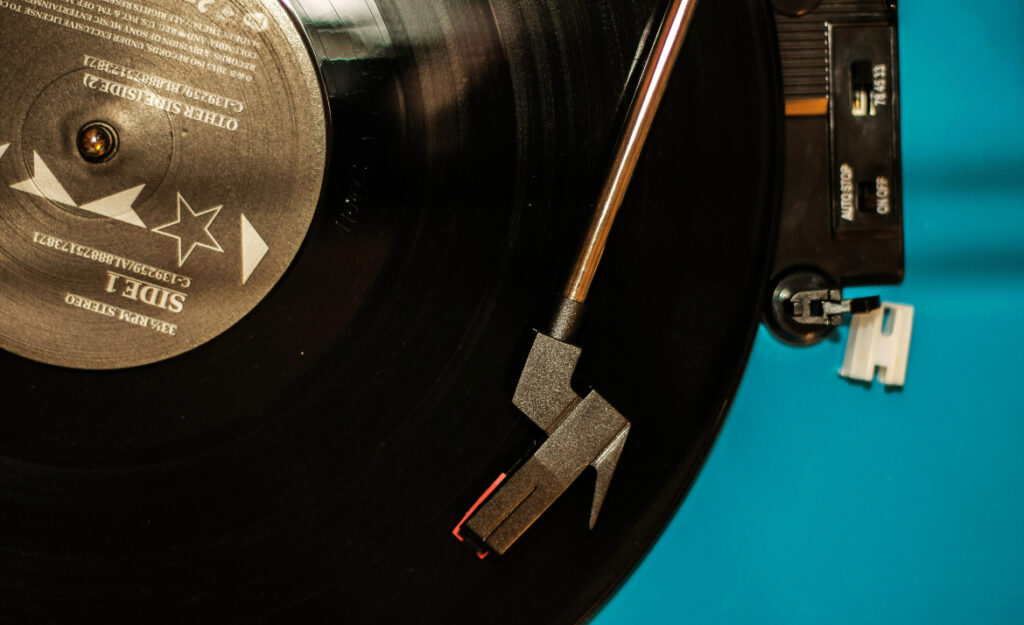
That sudden urge to scrutinize the lead-out groove of your newest vinyl isn’t just collector instinct. Nestled beside the label, vinyl runout codes—those mysterious etchings—serve as a vital guide to your record’s unique backstory and manufacturing journey.
Collectors, audiophiles, and casual listeners have begun to notice what those scrawled combinations might say about their pressings. These codes reveal clues about authenticity, edition, and the path a particular record has traveled from factory to turntable.
This article explores how understanding vinyl runout codes transforms your collecting experience. Let’s dig into embossed stampers, handwritten matrices, secrets behind pressing plants, and the essential steps that follow once you spin your next platter.
Decoding Runout Markings for Pressing Secrets
Identifying what those seemingly random numbers and letters mean gives you a new level of confidence in evaluating records. Each code in the runout area encodes part of the pressing’s history and authenticity.
For every pressing, vinyl runout codes act like a factory name tag. They often reveal which plant manufactured the disc, mastering technician, or even a pressing’s order in a release batch.
Spotting Factory Identifiers
Imagine you spot a small ‘SRC’ etched in the runout on your favorite LP. This typically points to Specialty Records Corporation’s involvement. Knowing these marks connects you directly to specific pressing plants.
Iconic codes such as ‘STERLING’ or ‘MASTERDISK’ don’t just look impressive—they point to mastering legends and facilities that guarantee distinct sonic character. Collectors value these as hallmarks of sound quality and production history.
Consider a record with ‘P’ or ‘TML’ stamped in the runout. These initials refer to pressing plant or mastering lab locations, helping you pinpoint your record’s true origin and compare pressings accurately.
Reading Hand-Etched Matrix Numbers
If you catch a set of hand-etched letters and numbers, you’re likely seeing the matrix code—each a unique fingerprint for the pressing batch. This can spell out the master’s cut, version, or side.
Suppose a runout reads like ‘ILPS 9111 A-1U’. The ‘A-1U’ at the end may pinpoint a first UK pressing, giving your copy a potential edge in both collectibility and sound fidelity.
Collectors meticulously catalog these codes for buying, selling, or confirming genuine copies. For example, verifying matrix numbers can highlight subtle variations that are invisible on the surface but crucial to serious collectors.
| Common Code | What It Means | Where to Find | What to Do Next |
|---|---|---|---|
| SRC | Specialty Records Corp. | US pressings (1980s-90s) | Use discographies to confirm era |
| MASTERDISK | NY mastering facility | Rock/Jazz LPs, 70s–90s | Seek for high-fidelity masterings |
| P | Plant identifier | Next to matrix code | Compare with plant reference lists |
| ILPS… | Island label matrix | British records, 60s–80s | Check version for rarity or value |
| A-1 | First cut/side | After main code | Verify against known first pressings |
Sorting Pressing Generations and Variations Precisely
Sorting different pressings by vinyl runout codes leads to accurate assessments and smarter purchases. You’ll gain more certainty when distinguishing first pressings from reissues and uncovering rare variants for any genre.
As collectors say, comparing matrix etchings helps you “buy with your eyes as well as your ears.” This habit supports authenticity and markets’ standards for what makes a pressing valuable—or merely ordinary.
Grouping Pressings By Code
Mapping runout codes across copies makes cataloging easier and more precise. Use clear spreadsheets to compare matrix numbers, pressing plant marks, and unique inscriptions side-by-side before you buy or sell.
- Record each matrix and code in your database; this makes referencing easy during trades or sales.
- Match runout inscriptions from trusted Discogs listings to identify the correct release version.
- Check pressing plant logos and codes for regional differences and potential collectibility.
- Log both handwritten and stamped marks to catch differences in reissues or bootlegs.
- Consult label forums to decode unfamiliar marks and expand everyone’s reference for future collectors.
By organizing copy details this way, you avoid guesswork and boost your confidence when making offers or trades for prized pressings.
Spotting Value-Defining Variants
A subtle change in a single letter or number in the vinyl runout codes may shift a record’s value dramatically. For instance, collectors pay a premium for an ‘A-1’ side when compared with an ‘A-4’ second or later cut.
- Hunt for ‘first cut’ or ‘test press’ designations to target rare, sought-after editions with a reputation for superior sound.
- Identify promotional markings or extra etchings that may indicate rare DJ or radio versions.
- Look for distinct handwriting styles for signs of personalized mastering or limited runs.
- Search for correct order of matrix suffixes to reject disguised bootlegs or inferior pressings.
- Examine both sides of the record, as codes may reveal different stories about pressing sequence and authenticity.
This hands-on scrutiny ensures you don’t pay collector prices for ordinary reissues and gives you genuine bragging rights at your next vinyl swap meet.
Recognizing Bootlegs, Fakes, and Overlooked Gems
Examining vinyl runout codes keeps buyers one step ahead when it comes to spotting bootlegs and unearthing undervalued gems. It’s a practical, reliable habit that can save money and enhance joy in collecting.
Discrepancies between label and runout details are red flags. Carefully cross-checking both sides protects you against counterfeits and guides you toward true first pressings instead of clever replicas.
Separating Authentic Pressings from Copies
Originals carry clear, precise codes—sometimes with specific etching styles or deep, pressed letters. Bootlegs or counterfeit jobs usually have sloppier, erratic markings and mismatches between label and runout details.
If you handle a possible bootleg, compare the runout data to online references. If the codes don’t match known first or official reissues, treat the record as a suspicious copy and act accordingly—set it aside or request additional provenance before purchase.
Another sign of fakes: too-perfect, uniform machine stamping with no variation between sides, which is rare for vintage or limited run records. Buyers in the know pass on such obvious forgeries by double-checking vinyl runout codes before parting with their cash.
Finding Hidden Value in Overlooked Pressings
Sometimes bargain bins hide first pressings with little label fanfare, but the runout code confirms their status as genuine, valuable editions. Patience in examining each candidate can lead to finding rare gems at unbeatable prices.
Example: someone finds a Led Zeppelin LP with a hand-etched first matrix, even though the sleeve and label are standard. By documenting the runout codes, they can confidently list or resell it as a true early pressing.
Always check auction or seller feedback on how runout codes are recorded. Trustworthy sellers include code photos or meticulous descriptions, letting you verify before you buy and avoid misrepresented bargains.
Cataloging and Sharing Code Knowledge with the Community
Documenting and sharing vinyl runout codes fosters stronger collecting communities. By contributing to cataloging projects or reference libraries, collectors help everyone identify, value, and track rare and unusual editions.
Sharing runout findings encourages transparency and trust in the marketplace, from online shops to in-person record fairs. Comparing notes turns every new pickup into another piece of the puzzle for serious and casual collectors alike.
Creating a Personal Runout Database
Using spreadsheets or collector apps, log matrix numbers, plant IDs, pressing details, and seller notes for every record you own. Keep the list updated with new findings as you acquire or trade new vinyl.
Add photos or sketches of particularly unusual etchings. Include descriptions about how the record sounds compared to others in your collection, noting if sonic quality aligns with specific code patterns or pressing generations.
Maintain a checklist: for each addition, record date, purchase location, key codes, notes on authenticity, and disc condition. This creates long-term reference value and makes collecting more methodical and rewarding.
Joining and Learning from Collector Forums
Online collector communities are prime venues for decoding tricky vinyl runout codes. Posting scans or written descriptions lets others share their expertise, or point you to online discographies or prior research.
Describe your discovery with clear, specific context: label, year, pressing location, and all code elements. Respond promptly to questions or suggestions to keep discussions active and maximize the benefit of crowd-sourced knowledge.
Always double-check new information with multiple forum contributors, especially before buying high-value pressings. Build a reputation by sharing honest, detailed findings, and others will reciprocate with rare insight or bargains over time.
Conclusion: Bringing New Depth to Vinyl Collecting
Understanding vinyl runout codes transforms the way collectors perceive and handle records. Each etched or stamped mark helps you decode a pressing’s authenticity, edition, and backstory, making your hobby richer and more reliable.
Learning to read and catalog these codes supports smarter buying and selling, strengthens your collection’s value, and connects you to a larger community united by curiosity and meticulous care for music history.
Let every spin include a pause to inspect the runout groove. Doing so brings new stories to light and keeps the spirit of discovery alive in every crate-digging adventure.



